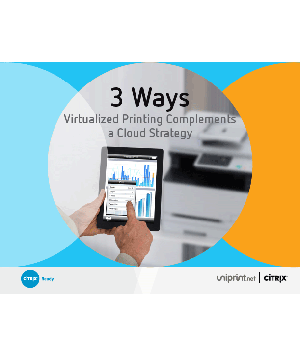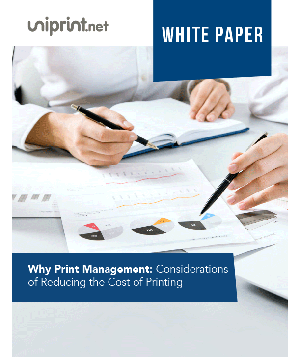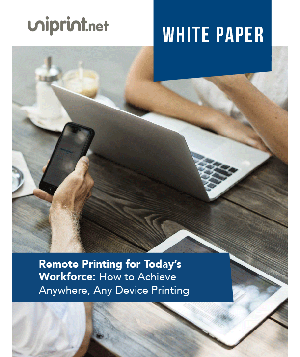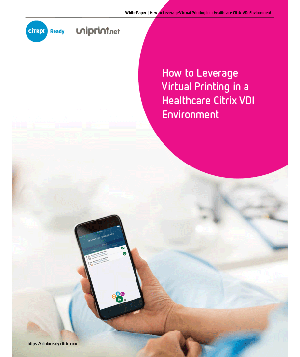2016 Predictions: The Future of Printing
Printing is one of the most basic business processes; one that has been changing with respect to the conveniences that users now have at their fingertips. Next year will not see its dissolution, but rather a continued evolution with the times to fit in with the developing IT and business landscapes. There’s no getting around it – the way in which we rely on printing has evolved over the years in cohesion with technological developments. Almost everything can now be personalized to fit individual working styles and is expected to move at even faster speed with the Internet of Things (IoT). As employees continue to enjoy the perks of BYOD technology and the mobile workspace becomes embedded into our culture, mainstays from the traditional experience of the office will need to advance in tandem.
Through the years, mobile devices have transformed from being lofty IT gadgets to intuitive, versatile accessories that meet the needs of professional and personal use and more. Today, users have the unique ability to view content and produce high-quality work by using mobile devices that they would have otherwise needed to have on paper years ago. Tasks can be streamlined and digitized, leaving room for more projects to be completed. But how can users address “mobile printing”? Migrating to cloud computing services for enterprise is more popular than ever as they cut through hardware complexities and roadblocks, sync data from any location with an internet connection and store time-sensitive materials. The hassle of connecting to different printer drivers for a task poses a time-consuming threat to productivity and managing workflow. Many times, these organizations also have high levels of security concerns (e.g., malware, hacking, etc.) that prevent them from using a service altogether.
Printing hardware will be simplified
The benefits of cloud computing can lead to simplifying print management issues, reducing overall printing output and/or can avoid the typical printing structures completely. Still, cloud printing isn’t as easy as signing up for a service and letting them handle the necessary organizational legwork. It requires much more of an in-depth look at overall processes: what print jobs are absolutely necessary and what could be done without? As printing and cloud computing sit at opposite ends of the proverbial spectrum, businesses will have to assess their output and develop a strategy that best adapts to the changing needs of users.
By moving further into a world where most work-related materials can be accessed through a connected cloud drive, businesses will need to task themselves with taking the proper steps to ensure they aren’t left out of the loop with services that are both enterprise and mobile-ready. Ideally, their strategy will have to highlight a specific focus on which IT services each individual needs. The challenge for these businesses will be to find the best solution and apply it to their needs.
Security will continue to be paramount
Will businesses be exposed to security threats? With an increased reliance on cloud capabilities, everyone is vulnerable to a security concern. For users in corporate environments, all data needs to be protected by a robust set of safekeeping features. The challenge won’t be how to avoid security hazards, but to mitigate them to not increase those risks. The development of secure pull printing will continue to increase over the next year. In spite of the many advantages the mobile workspace brings to professionals, the potential pitfalls that it presents cannot be dismissed as a challenge to acknowledge and prepare for. In this case, the priority would lie in maintaining control over sensitive information. Given new printing capabilities, it is necessary to ensure that each document is getting into the right hands.
The printing industry will continue to grow in certain sectors
Security and privacy concerns aside, the shift toward digital and mobile continues to gather speed. Several industries have noted printing technologies as a key component to their businesses, particularly within the healthcare, financial, legal and education arenas: banks, insurance, libraries and universities, among others. Printing is not only a constant activity, but one that is necessary to conduct and complete the most basic of business tasks.
Another area that continues to see the need for managing print services and virtualization is the health sector. Healthcare professionals are no stranger to the need for efficiency; mobile working styles are essential as they are constantly on the go, moving from patient appointments to laboratory rooms to clinical meetings. Now commonplace, facilities have moved to integrate the use of mobile devices and applications to support their clinical decision-making and objectives at the point of care. At different levels, health care professionals and staff have incorporated these items into their work routines; not only to manage their workloads and expand their bandwidth, but also to access patient-sensitive information (i.e. health record maintenance, clinical and critical care recommendations, patient care management and monitoring, etc.) that is mission-critical in order to deliver quality healthcare.
A case study in collaboration
One particular case comes from St. Joseph Health (SJH) — an integrated healthcare delivery system sponsored by the St. Joseph Health Ministry. Spanning across three regions (Northern California, Southern California and West Texas/Eastern New Mexico), SJH contains a full range of care facilities including hospitals, home health agencies, hospices and physician organizations. With the second largest emergency department and ten additional sites in California, a dispersed, six-zone printing environment in West Texas/Eastern New Mexico had over 1,200 printers in use. SJH needed a solution that would help with printer management issues and user profile corruption in a virtualized desktop infrastructure (VDI) environment.
Setup was neither easy nor reliable; sometimes a user could have a printer selected and functioning in five minutes, other times they would wait for up to twenty minutes and then have to rely on their IT for support. Reducing the number of calls to the service desk and the tickets being generated, as well as reducing the number of teams required to install and manage printers, became primary goals. These printing issues were also affecting patient care; if a print job failed, a patient could be left waiting for a prescription or discharge forms. The inefficiency of not being able to discharge patients in a timely manner represented significant added costs.
Vital to their extraordinarily busy environment and fast paced workflows, SJH needed a better print management solution that would be a match for their unique environment, improving upon the limitations of their current infrastructure. SJH adopted and implemented a pilot version of a customizable, universal printer driver system. In a four-month trial, SJH saw increased benefits, including:
• No longer requiring the installation of individual manufacturer printer drivers for each model of printer in use – a major coup for SJH’s network of professionals and staff.
• The ability to map out print jobs behind the scenes and manage where printers could be easily selected (with the nearest printer to the user’s location always readily available).
• Reducing overall print-related desk tickets by over 90%, making way for the technical support teams and lowering administrative costs.
• Improved workflow and increased productivity.
For SJH, mistaken or lost print jobs quickly became a thing of the past, safeguarding HIPAA compliance and other patient confidentiality regulations. Paper waste was minimized by differentiating prescriptions from documents and routing them to the correct print source, saving each location money. The installation time and maintenance of printers, previously cumbersome tasks, became restructured. Through this, medical personnel spent less time thinking about their previous technology issues and had more time to devote on patient care.
Paperless will not be possible in 2016
From invoices to faxes to contracts, “going paperless” remains a top-of-mind transformation in our eternal quest to simplify our communications, streamline team efforts and eliminate piles of clutter in the workplace.
But will printing become completely obsolete? Is paperless going to become the new wave that will be implemented across the board in the New Year? The answer is no. Printing technologies have evolved and progressed and that trend will certainly continue in 2016 and beyond. But even at the most basic level, there will always be a tangible need for hard copies and physical iterations of documents. Technological aspects will expand, but the behavioral needs and habits will have to move in the same direction for printing to be completely dead. For paperless to become the mainstream standard across the board, not only would mobile devices need to become even more prevalent than they are now, but nearly all documentation would need to be fused and virtualized into a single mode of communication that all users can recognize. Printing technology will need to be versatile and accessible enough keep up with advancements in newer mobile technologies and still be compatible with older systems in order to meet business goals in 2016 and beyond.
















